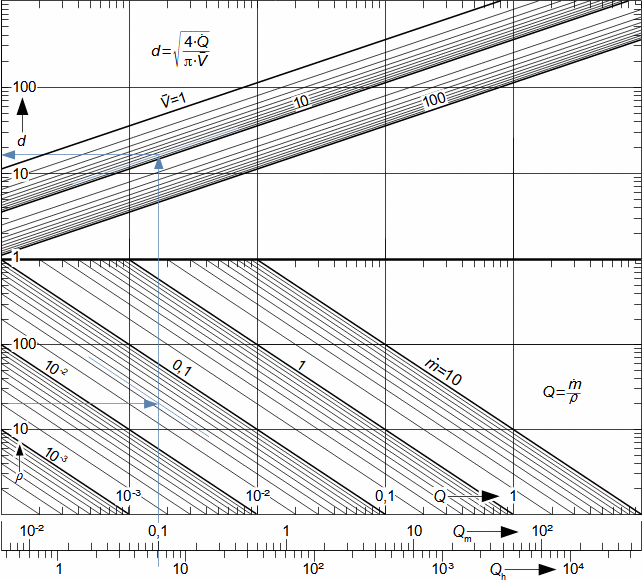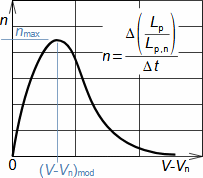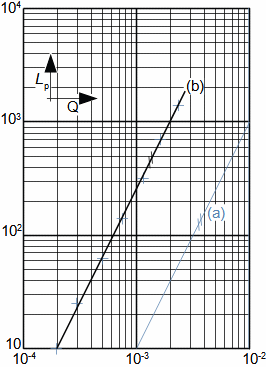Description of pressure loss development and basic conceptsInternal frictionDuring the fluid flow, friction on the surface of the flow channel and the flowing bodies as well as friction inside the fluid (so-called internal friction). Through friction, the fluid loses kinetic energy and in order to flow through the channel at the required velocity (flow rate), it must gain kinetic energy at the expense of pressure energy - a pressure loss Lp is created, or at the expense of other energy, such as potential energy, etc. Pressure loss in pipeFigure 1 shows the simplest case of pressure loss occurring when an incompressible fluid flows in a constant cross-sectional area pipe. Since the inlet and outlet of the duct must have the same flow, and therefore velocity, with no change in potential energy, the pressure loss Lp is equal to the pressure drop between the inlet and outlet, see Equation 1a.  1: Fluid friction in pipe and its consequences A [m2] flow area; F [N] friction force acting between channel wall and fluid; l [m] investigated length of channel; Lp [Pa] pressure loss on investigated length of pipe; Lq [J·kg-1] heat loss due to internal fluid friction; p [Pa] pressure; ρ [kg·m-3] density of working fluid. The index i indicates the inlet, the index e the outlet. The derivation of the equations is shown in Appendix 4.Loss heatThe loss heat Lq, which is generated during friction, heats the working fluid. The loss heat for the case of Figure 1 corresponds to the pressure energy of the pressure loss, see Equation 1b. Friction forceThe fluid acts with a friction force F on the channel in the direction of flow. The friction force for the case of Figure 1 corresponds to the product of the pressure difference between the inlet and outlet of the channel (pressure loss) and the flow area of the channel, see Equation 1c. NozzlesDiffusersIn addition to the pressure loss during the transport of fluids through pipelines, pressure loss also occurs during dynamic processes in channels designed to transform the pressure and kinetic energy of the fluid, such as nozzles, diffusers and blade channels of turbomachines. |
















